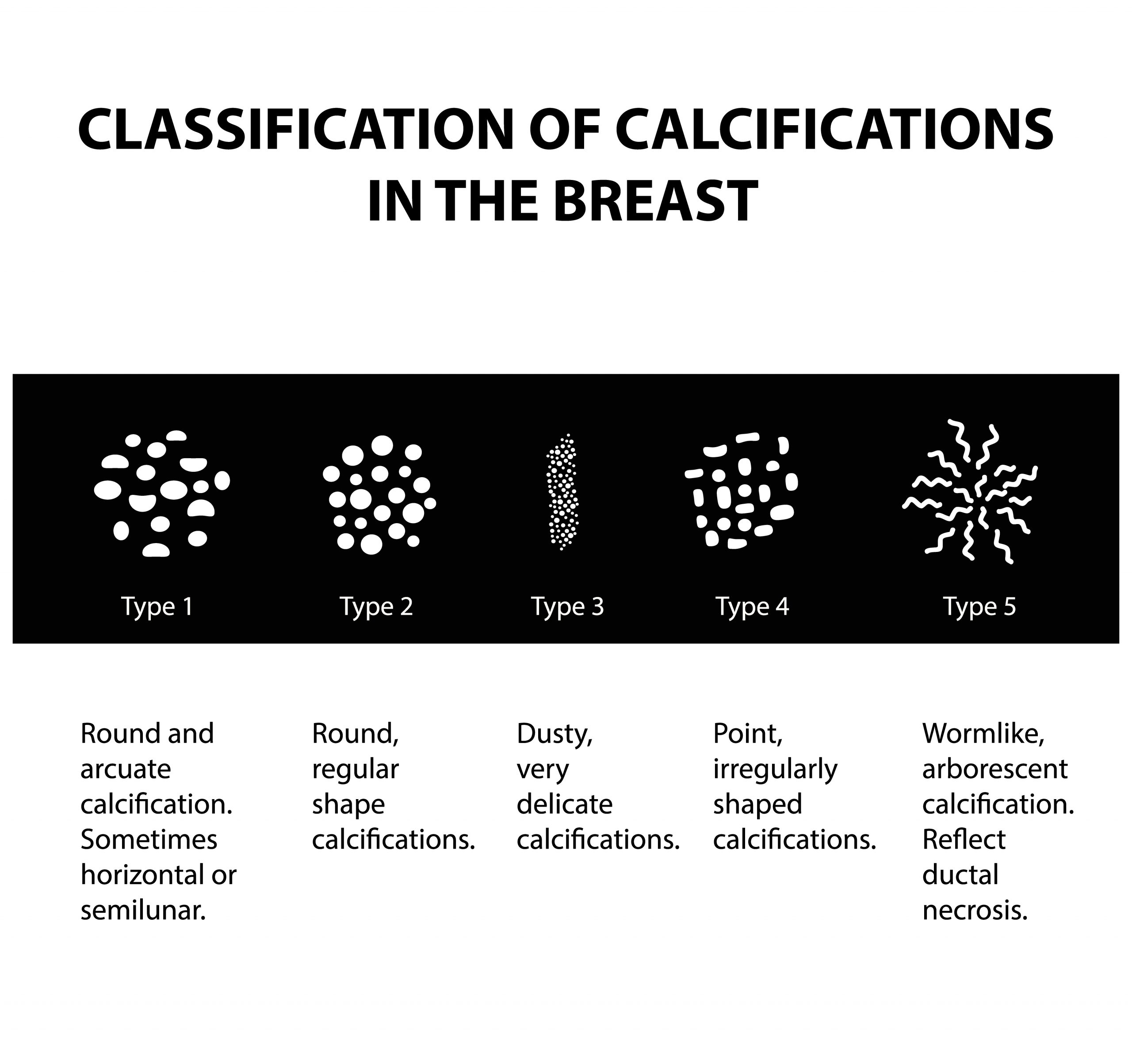

Breast calcifications are tiny calcium deposits that can appear in your breasts as you get older. Though these deposits are too small to feel, the calcifications will show up as small, bright white specks on a mammogram.
In women ages 50 and older, nearly half will have calcifications on their mammogram results. Calcifications are especially common after menopause.
There are two main types of calcifications:
Macrocalcifications are round, large and usually spread through the breast randomly. These are almost always benign and usually do not require follow-up.
Image obtained from Susan G. Komen®Microcalcifications are small, irregular shapes that will sometimes appear in patterns − like cluster or lines. These calcifications can be a sign of breast cancer, and your healthcare provider may order additional tests or schedule follow-up appointments to monitor the calcifications for changes.
Image obtained from Susan G. Komen®
Breast Calcifications and Cancer
Calcifications are generally harmless, but can be a sign of cancer if the spots are growing in certain patterns.  Calcifications themselves cannot develop into cancer − these only possibly serve as a marker that there are changes occurring in the breast tissue. In most cases, calcifications are benign or not cancerous.
Calcifications themselves cannot develop into cancer − these only possibly serve as a marker that there are changes occurring in the breast tissue. In most cases, calcifications are benign or not cancerous.
If your mammogram indicates any calcifications that appear to be suspicious, your healthcare provider will contact you and discuss any additional testing that is needed.
You may be called back for a second mammogram to take a closer look at any suspicious spots. If the additional mammogram results are still concerning, your healthcare provider may order a biopsy to confirm whether or not the spots are cancerous.
Causes
Breast calcifications may be related to a number of factors, including:
- Aging
- Past injury to or infection in the breast
- Swelling in the breast tissue
- Breast cysts
- Previous radiation treatment to the breast
- Benign growths or tumors in the breast, such as fibroadenomas
- Calcifications in the skin or blood vessels
Additionally, some deodorants, lotions or powders contain ingredients that can appear as calcifications on a mammogram. To avoid this, be sure to remove skin products of any kind before having a mammogram.
When to See a Healthcare Provider
Breast calcifications are not something you will notice on your own – these will be found during regular mammograms.
Your healthcare provider will evaluate your mammogram results for calcifications that could be associated with precancerous changes or breast cancer.
If any suspicious spots are found, your healthcare provider may order another mammogram with higher magnifications to further examine these areas.
A breast biopsy may also be completed to test a sample of the breast tissue in the area where the calcifications are.
Your radiologist may review images from your previous mammograms to determine if the calcifications have changed.
If the breast calcifications appear to be benign, your healthcare provider will give you a recommendation for a follow-up appointment to continue to monitor any changes in the shape, size and number of calcifications.
We are here to help.
Navigating a health concern can be daunting. With the help of our women’s health navigator, you don’t have to do it alone. Your nurse navigator will be by your side every step of the way, providing support, education and guidance through each part of your journey.
